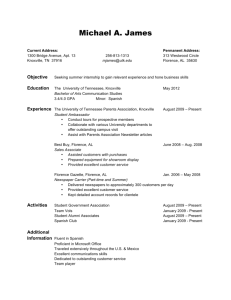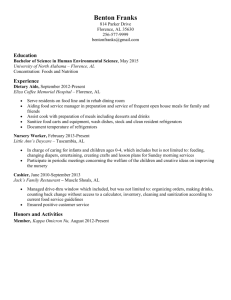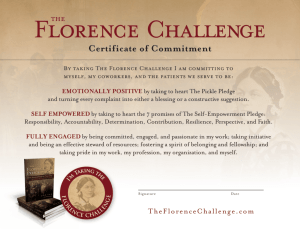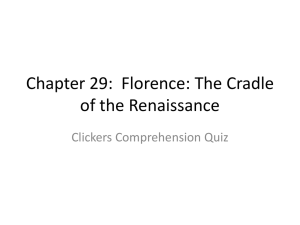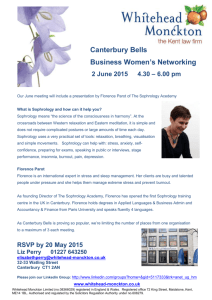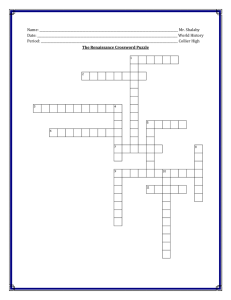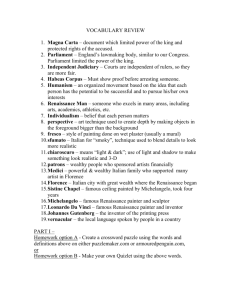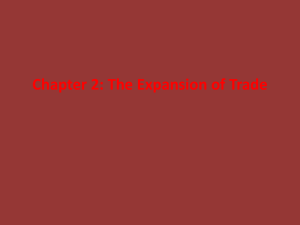The City as Monument: Florence 1250–1450
advertisement
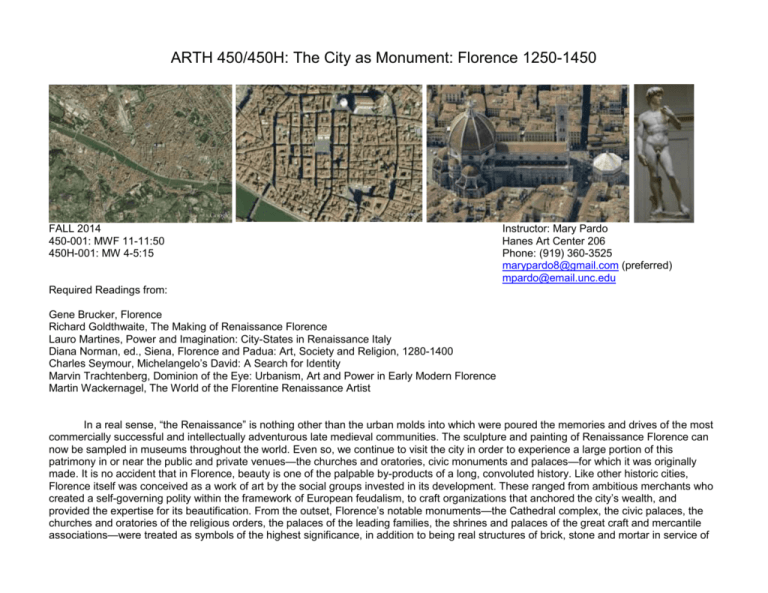
ARTH 450/450H: The City as Monument: Florence 1250-1450 FALL 2014 450-001: MWF 11-11:50 450H-001: MW 4-5:15 Instructor: Mary Pardo Hanes Art Center 206 Phone: (919) 360-3525 marypardo8@gmail.com (preferred) mpardo@email.unc.edu Required Readings from: Gene Brucker, Florence Richard Goldthwaite, The Making of Renaissance Florence Lauro Martines, Power and Imagination: City-States in Renaissance Italy Diana Norman, ed., Siena, Florence and Padua: Art, Society and Religion, 1280-1400 Charles Seymour, Michelangelo’s David: A Search for Identity Marvin Trachtenberg, Dominion of the Eye: Urbanism, Art and Power in Early Modern Florence Martin Wackernagel, The World of the Florentine Renaissance Artist In a real sense, “the Renaissance” is nothing other than the urban molds into which were poured the memories and drives of the most commercially successful and intellectually adventurous late medieval communities. The sculpture and painting of Renaissance Florence can now be sampled in museums throughout the world. Even so, we continue to visit the city in order to experience a large portion of this patrimony in or near the public and private venues—the churches and oratories, civic monuments and palaces—for which it was originally made. It is no accident that in Florence, beauty is one of the palpable by-products of a long, convoluted history. Like other historic cities, Florence itself was conceived as a work of art by the social groups invested in its development. These ranged from ambitious merchants who created a self-governing polity within the framework of European feudalism, to craft organizations that anchored the city’s wealth, and provided the expertise for its beautification. From the outset, Florence’s notable monuments—the Cathedral complex, the civic palaces, the churches and oratories of the religious orders, the palaces of the leading families, the shrines and palaces of the great craft and mercantile associations—were treated as symbols of the highest significance, in addition to being real structures of brick, stone and mortar in service of the community’s economic and socio-cultural activities. As symbolic hubs, they remained “live” venues even after completion, and spawned a dynamic outpouring of interrelated artistic projects. It is the purpose of this course to offer students an opportunity to integrate the spatial and material description of a modern historic city center, with the narratives of Renaissance art (including the narratives that drive the city’s modern tourism industry), and with the archival record of the city’s most dramatic changes. Using digital resources, we will collaboratively produce a kind of time-traveler’s guidebook to Renaissance Florence in the period of its greatest flowering. In weekly team reports, combining Google Earth, historic maps and descriptions, modern archaeological evidence and the best-quality images available online and in published sources, we will reconnect the spatial coordinates of modern Florence’s historic neighborhoods with the chronological unfolding of her great architectural and artistic projects in the period 1250-1450 (these two centuries bridge the interval from the consolidation of the city’s republican government to the subordination of that same government to the interests of the Medici family, who went on to become Florence’s hereditary rulers). Besides contributing, as a team member, to the evolving “map” of the Renaissance city, each student will also undertake an individual research paper (15-20 pages), exploring in greater depth a particular monument brought into existence as a “satellite” to Florence’s great urban projects. We begin the course by reading an exemplary short monograph on just such a work, Michelangelo’s David. Each team report will be supported by individually authored/signed analytical descriptions documented with maps, diagrams, and bibliography relevant to the monuments in question; this material will be posted to the course’s Sakai site, where it can be consulted throughout the semester.

